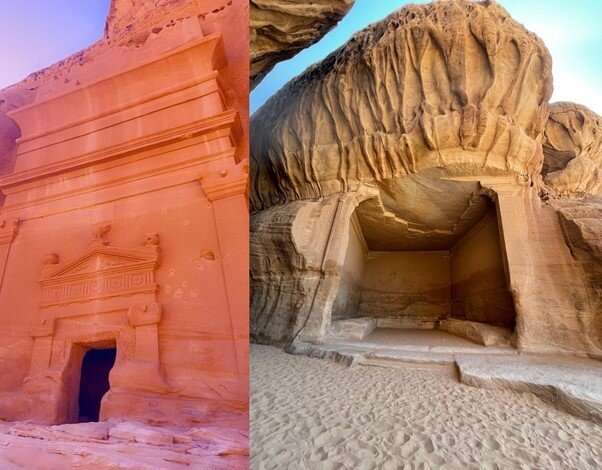Weighing the cost of increasing Saudi heritage tourism

The impact of tourism development at the Al-Hijr Archaeological Site, decreed Saudi Arabia's first UNESCO World Heritage Site in 2008, has been significant since the Saudi Vision 2030 strategy was launched in 2016, which positioned heritage tourism sites as important catalysts in the nation's long-term transition to a post-oil economy.
Dating back to the first century BC, Al-Hijr is considered a sister site to Petra in Jordan, as both were developed by the Nabataean nomadic Arabian tribe. However, while Petra has become one of the Middle East's most popular tourist destinations, Al-Hijr has remained on the periphery, largely due to Saudi Arabia's strict regulations on international arrivals that only recently expanded beyond religious or business-focused travelers.
Al-Hijr is now a focus of new international tourism activity, and while the UNESCO listing helped foster local community support for tourism due to new economic opportunities, the proposed scale of development has raised numerous local concerns, including fears of 'cultural erosion' and unsustainable growth.
Through identifying local stakeholder perspectives on embryonic tourism development at Al-Hijr, research project lead author Abdulmohsen Alahmadi, a Masters student at Flinders University's College of Humanities, Arts and Social Sciences, believes the research can provide valuable recommendations to mitigate emerging concerns among wary local communities.
"It was frequently argued that the speed of tourism development could lead to 'cultural erosion' or irreversible changes to the customs and traditions of communities that had received limited exposure to non-domestic tourists before 2019," says Mr. Alahmadi.
"We recommend that two-way communication platforms are introduced that permit interested community members, local leaders and private tourism business stakeholders to share views and concerns."
Saudi tourism business owners and senior managers interviewed for this study between January and February 2020 said they wanted to have greater input to the development of tourism at Al-Hijr, and to raise concerns regarding the nature and trajectory of tourism development.
Their responses capture an important snapshot of the evolving Saudi tourism environment, as they were recorded just months after the introduction of Saudi Arabia's new international tourist visas but only a few weeks before international travel bans due to COVID-19 were implemented.
Flinders University tourism lecturer Dr. Gareth Butler, a co-author of the paper, says the research can therefore be used as a valuable guide for Saudi tourism operators as they now start reviving their business operations after COVID-19's enforced disruptions.
"Our study not only identifies the views and concerns of stakeholders located in proximity to Al-Hijr, but sheds light on the potential challenges other regional communities may soon face if heritage tourism is to be rapidly developed elsewhere in Saudi Arabia," says Dr. Butler.
The research—Tourism development at the Al-Hijr Archaeological Site, Saudi Arabia: SME sentiments and emerging concerns, by Abdulmohsen Alahmadi, Gareth Butler and Gerti Szili—has been published in the Journal of Heritage Tourism.
More information: Abdulmohsen Alahmadi et al, Tourism development at the Al-Hijr Archaeological Site, Saudi Arabia: SME sentiments and emerging concerns, Journal of Heritage Tourism (2022). DOI: 10.1080/1743873X.2022.2078214
Provided by Flinders University


















